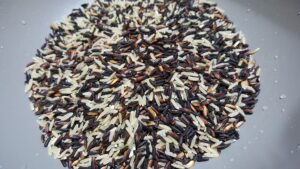
The number one spot in our top 10 monthly most read chart has been retained by Zemedikun and colleagues with their analysis of chronic conditions that are associated with periodontal disease. This paper has made a strong showing ever since it was first published. However, we also have four new entries into the top 10 most read during October.
Community support
Our third most read paper was from Bridget Kiely and colleagues who investigated the role of community link workers. These workers are non-health or social care professionals who are skilled in determining the health and well-being needs of people, can help develop health and well-being plans, and provide support to connect patients with community resources. However, the researchers found a lack of evidence relating to these community schemes and encouraged more evaluation of such programmes.
Rice and diabetes
Jiayue Yu and colleagues carried out a systematic review and meta-analysis to investigate evidence around white or brown rice consumption, and the risk of type 2 diabetes. Overall, the study showed that there was a reduced risk of type 2 diabetes associated with brown rice consumption in medium quality observational studies. Randomised trial evidence was shown to be of more variable quality and had some inconsistencies about cardiometabolic risk factors associated with eating different types of rice.
What drives recruitment for clinical trials?
A large retrospective study of 194 trials carried out to investigate factors affecting participant accrual showed that the only influences were whether a drug was a first- or second-line therapy, which phase the trial was and who the drug manufacturer was. Drugs under investigation for third-line treatments or above are often tested in considerably smaller pools of patients. However, factors that were traditionally thought to influence patients to enrol in clinical trials such as disease burden, primary endpoint, crossover, randomisation ratio, blinding, and single-agent response were not associated with accrual rate in this study by Kristina Jenei and colleagues.
Financial links of key opinion leaders
Marie Clinckemaillie and colleagues investigated financial links between physicians and pharmaceutical companies in France during the period from 2014 to 2019, and found that those who were considered to be key opinion leaders (KOL) generally had more extensive links to industry organisations than non-KOL physicians. Almost all professional medical associations had at least one industry-linked KOL on their board.
Below is the full list of papers that were the most read in BMJ Open during October 2022.
Like what you see? Follow this link for all our most recent content.